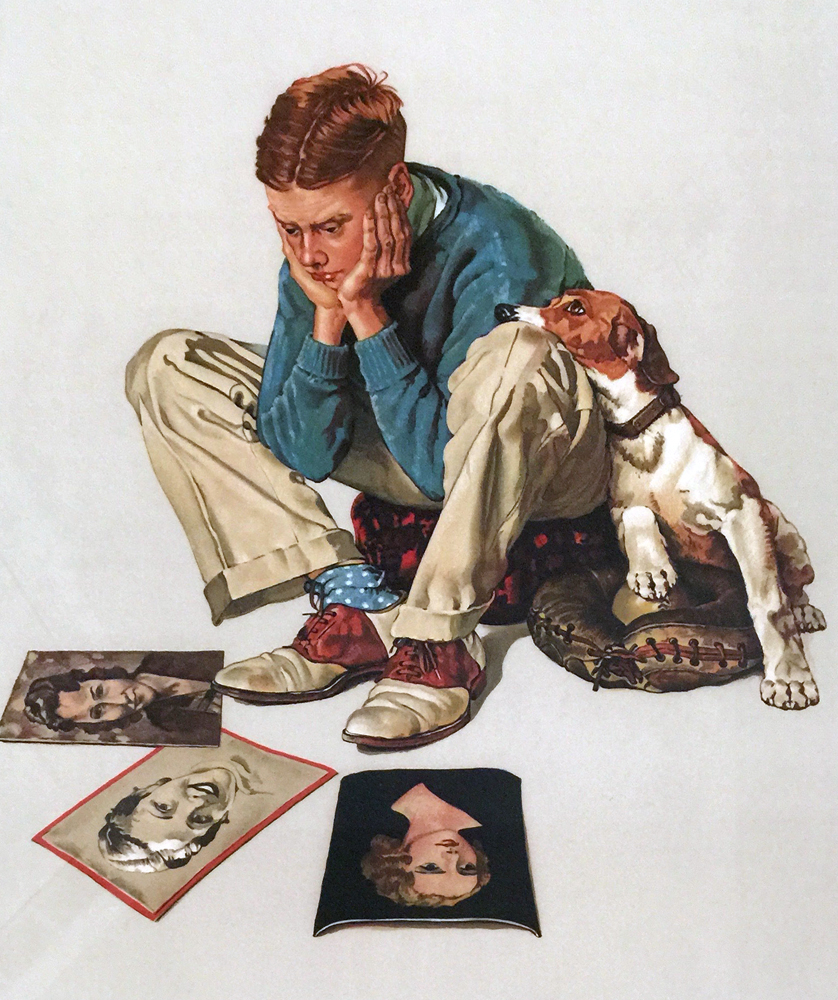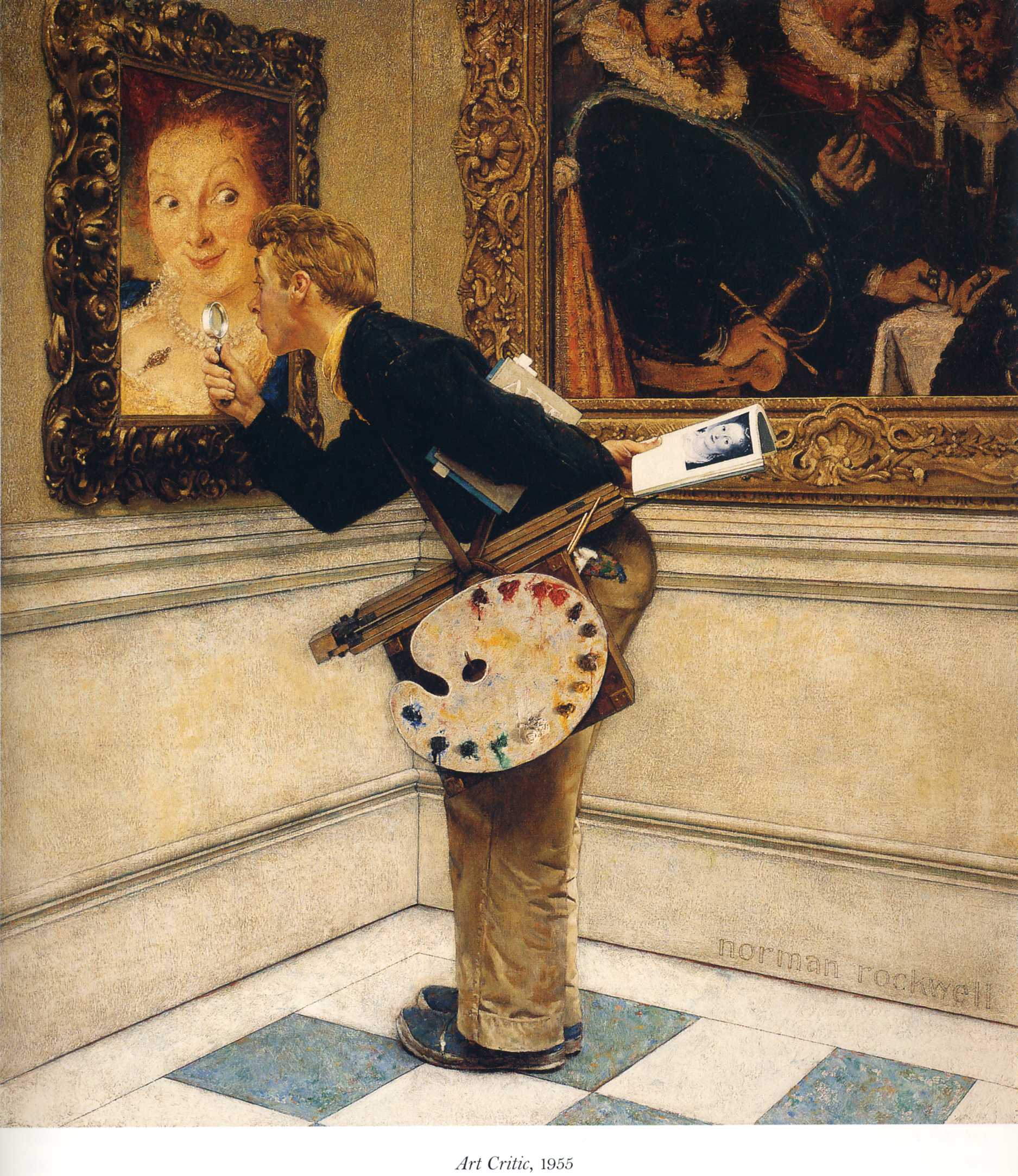“I'm not a historian. I just painted the things I saw around me. I was showing the America I knew and observed to others who might not have noticed.” Rockwell truly reflected the currents of American life and times, from his earliest drawings to the patriotic themes of World War II to more politically oriented themes in his later years. His genius was in being able to capture the essence of what is now considered largely “an America vanished.” Before the media revolution people looked forward to and identified with Norman Rockwell magazine covers. They captured the emotions of the times, not only that which was, but also what people would have liked life to be.
Rockwell was constantly seeking new ideas and new faces in his daily life. He wrote that everything he had ever seen or done had gone into his pictures. He painted not only the scenes and people close to him but, in a quest for authenticity, would approach total strangers and ask them to sit for him. His internal art of 'storytelling' became integrated with his external skills as an artist. What emerged was what we know today as an incredible facility in judging the perfect moment; when all the elements that define and embellish a total story are in place, when to stop the action and snap the picture.
In 1962, Rockwell was quoted in Esquire magazine as saying: "I call myself an illustrator but I am not an illustrator. Instead I paint storytelling pictures which are quite popular but unfashionable." "Unfashionable" was a misnomer; his works were in fact very popular, but he was extremely sensitive to the way the art world as well as the public judged him. "No man with a conscience can just bat out illustrations. He's got to put all of his talent, all of his feeling into them. If illustration is not considered art, then that is something that we have brought upon ourselves by not considering ourselves artists. I believe that we should say, 'I am not just an illustrator, I am an artist."




Comentarios
Publicar un comentario